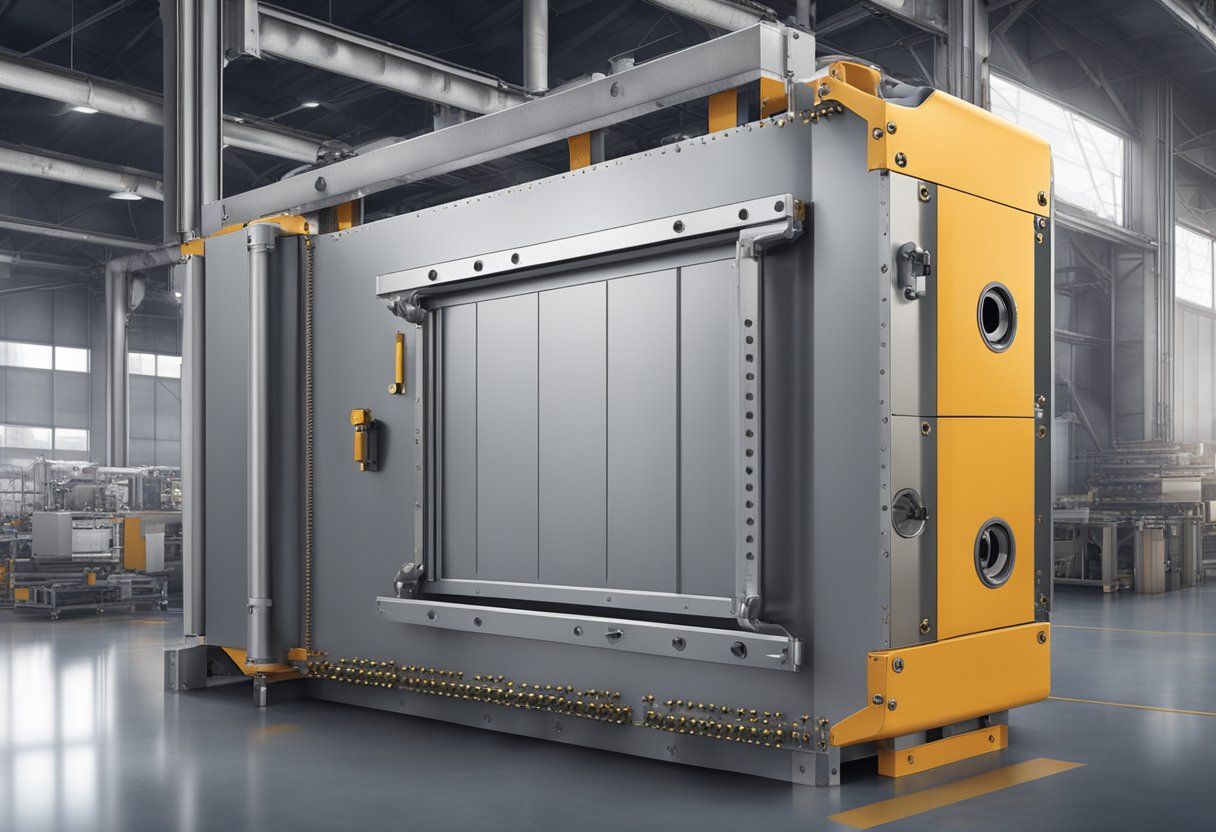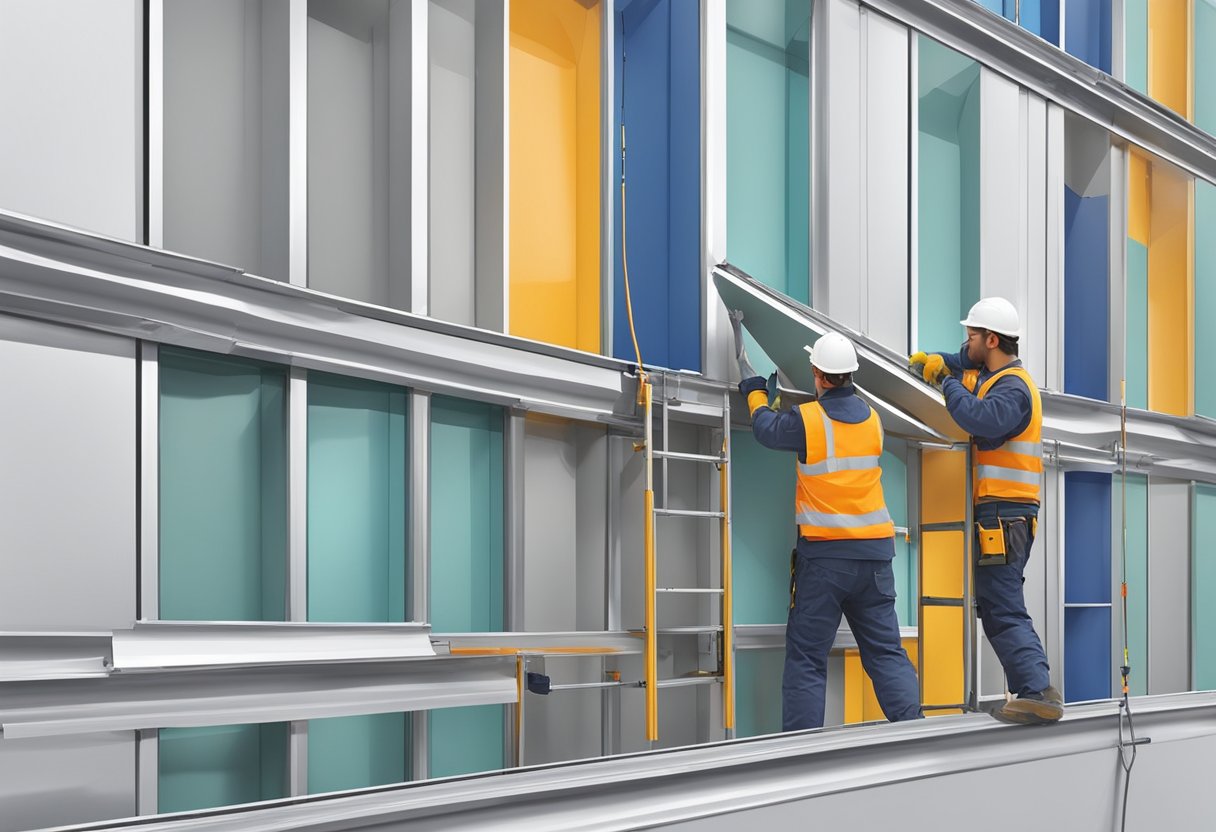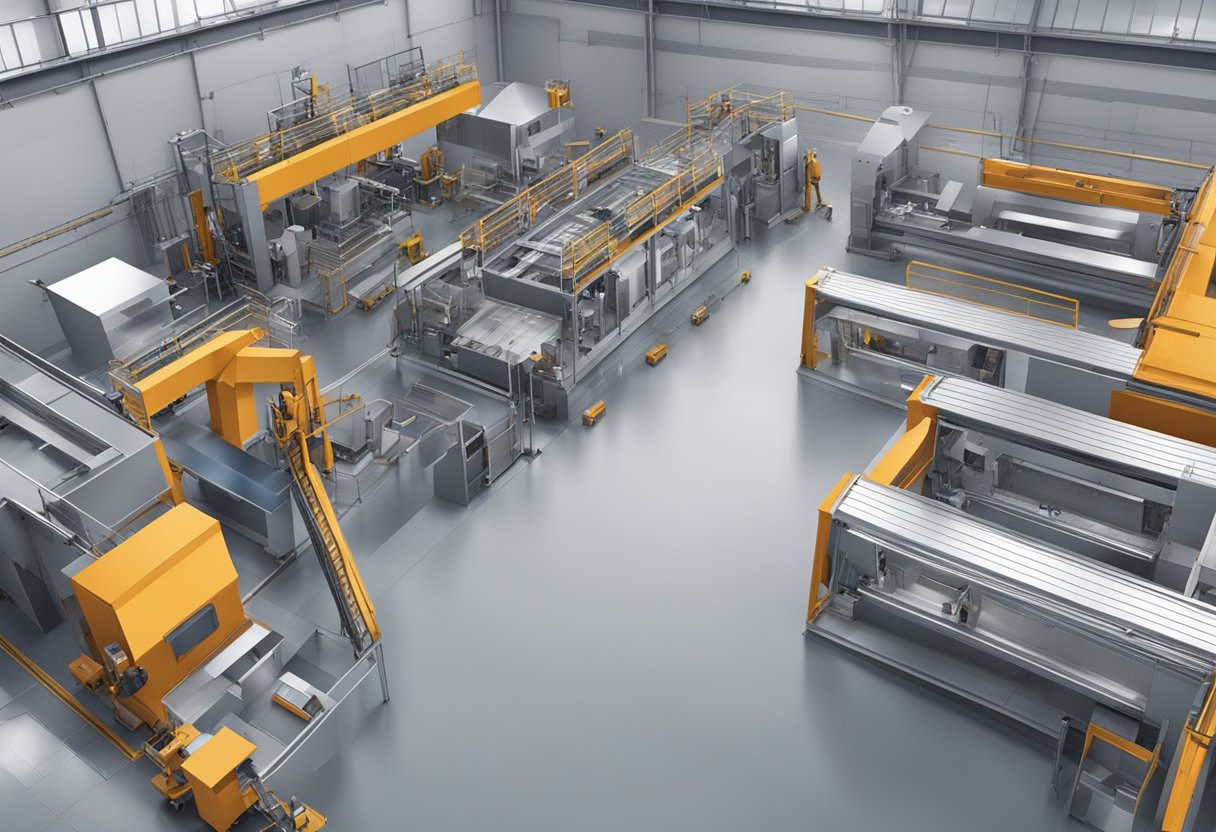If you are looking for an efficient, durable, and cost-effective solution for your building’s exterior walls, an insulated aluminum panel might be the answer. Insulated aluminum panels are an excellent choice for commercial and industrial buildings because of their energy efficiency, versatility, and durability. These panels can be used for both exterior and interior applications, providing excellent thermal insulation and noise reduction.

Insulated aluminum panel consist of two layers of aluminum sheets bonded to a non-aluminum core, usually made of polyethylene or fire-resistant mineral wool. The result is a lightweight, yet strong panel that provides excellent thermal insulation and noise reduction. These panels are easy to install and can be customized to fit any building design, making them a popular choice for architects and builders. Additionally, insulated aluminum panels are resistant to fire, moisture, and corrosion, making them ideal for harsh environments.
Basics of Insulated Aluminum Panel

Insulated aluminum panels (IAPs) are composite panels made of two aluminum sheets bonded to a non-aluminum core, which are designed to provide thermal insulation. IAPs are used in a wide range of applications, including walls, roofs, and ceilings for residential, commercial, and industrial buildings. They are also used in the construction of refrigerated trucks, containers, and cold storage facilities.
IAPs are lightweight, durable, and easy to install. They provide excellent thermal insulation, which helps to reduce energy consumption and lower heating and cooling costs. IAPs are available in a variety of thicknesses, sizes, and finishes, making them suitable for a wide range of applications.
The non-aluminum core of IAPs is typically made of a high-density foam material, such as polyurethane or polystyrene, or a mineral wool material. These materials provide excellent thermal insulation properties, which help to prevent heat loss or gain through the building envelope. The aluminum sheets that make up the outer layers of the panel provide structural stability and protect the core from moisture, fire, and other environmental factors.
IAPs are available in a range of R-values, which measure the thermal resistance of the panel. The higher the R-value, the better the thermal insulation properties of the panel. IAPs with higher R-values are more effective at reducing energy consumption and lowering heating and cooling costs. The R-value of an IAP depends on the thickness of the panel and the type of core material used.
Manufacturing Process

Materials Selection
The first step in manufacturing insulated aluminum panels is selecting the appropriate materials. The panel substrate is typically made of aluminum, which is lightweight, durable, and corrosion-resistant. The panel facings are also made of aluminum and create an air, water, and vapor barrier. The facings are resistant to abuse and come in a multitude of finishes, effects, and colors. The core of the panel is made of either foam plastic or mineral fibers, which improve the thermal performance of the panel.
Panel Fabrication
The fabrication process begins with the selection of the raw material, which is then cut to the desired size and shape. Next, the insulated aluminum panels are formed by attaching a layer of foam insulation to the panel substrate. The foam insulation layer is usually made of polyurethane or polystyrene and is used to improve the thermal performance of the panel.
The panels are formed by a continuously, foamed-in-place manufacturing process which binds interior and exterior aluminum facings to a polyisocyanurate, insulating core. The panels can be molded in a variety of styles and sizes depending on the application.
Quality Control
Quality control is an essential part of the manufacturing process for insulated aluminum panels. The panels are subject to rigorous testing to ensure that they meet industry standards for strength, durability, and thermal performance.
During the manufacturing process, the panels are inspected at each stage to ensure that they meet the required specifications. This includes testing the panel facings for adhesion, abrasion resistance, and color consistency. The foam insulation layer is also tested for density, compressive strength, and thermal conductivity.
In addition, the finished panels are subjected to a battery of tests to ensure that they meet industry standards for fire resistance, wind resistance, and water infiltration. These tests are conducted by independent testing laboratories to ensure that the panels meet the required specifications.
Overall, the manufacturing process for insulated aluminum panels is a complex and highly-regulated process that requires careful attention to detail and quality control at every stage.
Properties and Performance
Thermal Insulation
Insulated aluminum panels are known for their excellent thermal insulation properties. The panels are made up of two metal sheets with a rigid foam core, which helps to reduce heat transfer and keep the building’s interior temperature stable. The R-value of insulated aluminum panels can range from R-16 to R-32 or more, depending on the specific product and application [1]. The higher the R-value, the better the thermal insulation performance of the panel.
Durability
Insulated aluminum panels are highly durable and long-lasting. The metal sheets are made of aluminum, which is known for its strength and resistance to corrosion. The rigid foam core provides additional strength and stability to the panels. Insulated aluminum panels are also resistant to fire, structural damage, and water leakage. They are designed to meet the performance and testing requirements of the model building codes and insurance listing agencies [1].
Sustainability
Insulated aluminum panels are a sustainable choice for building construction. The panels are made of recyclable materials, including aluminum and rigid foam insulation. They are also energy-efficient, which can help to reduce the building’s carbon footprint. The panels can be designed to meet LEED certification requirements and can contribute to the building’s overall energy efficiency rating [4].
In summary, insulated aluminum panels offer excellent thermal insulation, durability, and sustainability. They are a popular choice for building construction due to their long-lasting performance and energy-efficient properties.
Installation Guidelines
When installing insulated aluminum panels, it is important to follow the manufacturer’s guidelines for proper installation. Failure to do so can result in improper performance and potential damage to the panels. Here are some general guidelines to keep in mind:
Handling and Storage
When handling and storing insulated aluminum panels, it is important to take certain precautions to prevent damage. Panels should be lifted and carried by their edges, never by the faces. They should also be stored flat and protected from moisture and direct sunlight. If panels need to be stored on their edges, they should be supported every 2 feet to prevent warping.
Cutting and Trimming
Insulated aluminum panels can be easily cut and trimmed using standard cutting tools. However, it is important to use the correct blade and to take care not to damage the panel faces or insulation core. A circular saw with a fine-toothed blade or a panel saw is recommended for cutting panels to size. When trimming panels, it is important to use a straightedge and to make sure the cut is clean and straight.
Installation
Insulated aluminum panels can be installed vertically or horizontally. When installing panels vertically, it is important to start at one corner and work your way across the wall, making sure the panels are level and plumb. When installing horizontally, it is important to start at the bottom and work your way up, making sure the panels are properly aligned and supported.
Panels should be fastened to the wall using the manufacturer’s recommended fasteners and spacing. It is important to make sure the fasteners are driven straight and flush with the panel surface, but not so tight that they damage the panel. When installing panels, it is important to leave a small gap between each panel to allow for expansion and contraction.
Conclusion
By following these guidelines, you can ensure a proper and secure installation of your insulated aluminum panels. Always refer to the manufacturer’s installation guide for specific instructions and recommendations.
Applications and Uses
Insulated aluminum panels have a wide range of applications and uses in the construction industry. They are commonly used in building construction and cold storage facilities due to their excellent insulation properties and durability.
Building Construction
Insulated aluminum panels are commonly used in building construction for both exterior and interior applications. They can be used as roof panels, wall panels, and even as flooring. The panels are lightweight, making them easy to install and handle.
One of the main advantages of insulated aluminum panels is their energy efficiency. The panels have a high R-value, which means they provide excellent insulation and reduce energy consumption. This makes them an ideal choice for buildings that require temperature control, such as warehouses, factories, and commercial buildings.
Cold Storage Facilities
Insulated aluminum panels are also commonly used in cold storage facilities, such as refrigerated warehouses and food processing plants. The panels provide excellent insulation, which helps to maintain a constant temperature inside the facility.
In addition to their insulation properties, insulated aluminum panels are also resistant to moisture and corrosion. This makes them an ideal choice for cold storage facilities, where moisture and temperature fluctuations can cause damage to other building materials.
Overall, insulated aluminum panels are a versatile and durable building material that can be used in a wide range of applications. Their energy efficiency, durability, and resistance to moisture and corrosion make them an ideal choice for building construction and cold storage facilities.
Maintenance and Care
Insulated aluminum panels require minimal maintenance, but proper care is essential to maintain their functionality and appearance. Here are some tips to ensure that your insulated aluminum panels remain in good condition for years to come:
Cleaning
Regular cleaning is necessary to prevent the buildup of dirt, grime, and other pollutants on the surface of the panels. Use a soft-bristled brush or a cloth to remove any loose debris from the surface of the panels. Then, use a mild detergent and warm water to clean the panels. Avoid using abrasive cleaning agents or tools that can scratch or damage the surface of the panels.
Handling
When handling insulated aluminum panels, be sure to use proper lifting techniques to avoid damaging the panels. Do not lift the panels by the edge of the top metal face, as this may cause the metal face to delaminate from the foam core. When turning or tilting the panels, place a cushioning material under the panel edge to prevent crushing or other damage. Roll the panel on the male leg only.
Repairs
If your insulated aluminum panels become damaged, it is important to repair them as soon as possible to prevent further damage. Small dents or scratches can be repaired using a touch-up paint, while larger damages may require professional repair services. Consult the manufacturer’s maintenance manual for specific repair instructions.
Inspections
Regular inspections can help identify any potential issues with your insulated aluminum panels before they become major problems. Inspect the panels for signs of damage, such as dents, scratches, or delamination. Also, inspect the panels for signs of water infiltration, such as discoloration or mold growth. If you notice any issues, contact a professional immediately to address the problem.
Following these tips can help ensure that your insulated aluminum panels remain in good condition and perform optimally for years to come.



